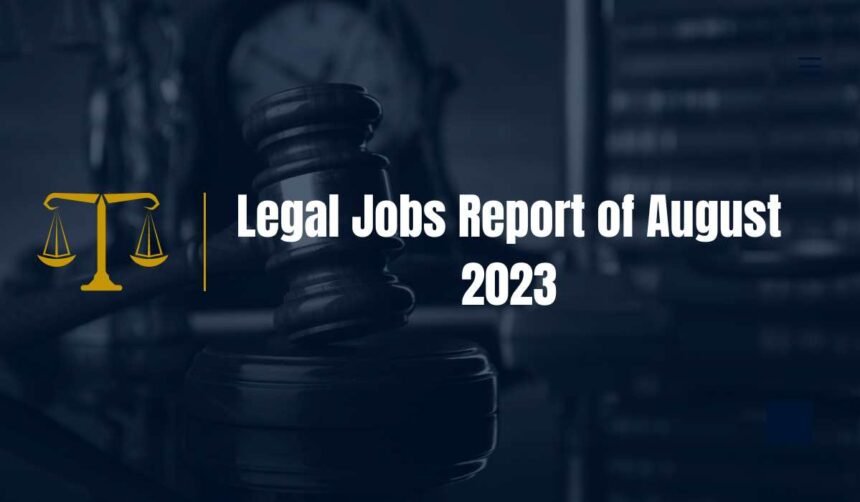The legal services industry in the United States took a turn for the worse in August. The latest figures from the Labor Department reveal a shocking reality: the industry lost 4,200 jobs, hitting an all-time low.
Because they depict a period of difficulty for a sector that has long served as a pillar of the American economy, these figures are generating quite a stir.
The legal industry is a broad ecosystem that includes many different types of professionals, such as paralegals, legal assistants, and, of course, lawyers.
The preliminary seasonally adjusted data from the U.S. Bureau of Labor Statistics shows that there were 1,175,700 people working in the legal sector in August. But let’s go deeper into these figures to find out what they really mean.
This decline is all the more puzzling because it follows Friday’s revised negative estimate for employment in the legal profession in June and July.
The Bureau of Labor Statistics first portrayed a bright picture, predicting that employment would reach 1,185,100 in June, drawing closer to last summer’s record high.
June’s revised figures are a more manageable 1,182,100, which is still the highest point the industry has seen so far this year but falls short of setting a record.
The revised estimate for July employment drops from 1,182,500 to 1,179,900. While not dramatic, these changes nevertheless indicate a more nuanced storyline in the law industry’s employment structure.
Wells Fargo published a report in August that sheds light on the causes of this chaos. It seems to indicate that by mid-2023, American law firms were already struggling with an excess of lawyers.
This issue, combined with drops in client demand and attorney productivity, made for a difficult climate for companies all around the country.
Even though over a dozen major law firms have announced layoffs since November, some have taken a different tack, which is intriguing. Some companies are holding on to their legal staff while waiting for the market to improve.
These contrasting approaches highlight the ambiguity and diversity of legal sector resilience.
The legal industry’s employment problems are serious, but they must be placed in the larger context of the American job market. The nation’s jobs market improved slightly in August.
The jobless rate, however, jumped to 3.8% despite this encouraging data. In addition, wage growth slowed at this time, a sign of labor market relaxation.
These shifts are essential because of their impact on how people anticipate the Federal Reserve will operate. The current state of the jobs market is likely to impact the central bank’s next decision on whether or not to hike interest rates.
Given the complex nature of the economy, the Federal Reserve looks to be in no hurry to implement rate hikes.
In conclusion, the future holds both exciting opportunities and formidable challenges for the U.S. legal services industry. Jobs growth has been volatile, and law firms’ responses have been all over the map.
As the industry works its way through the current climate of uncertainty, it will continue to be affected by broader labor market trends in the United States. The fortunes of the legal sector are highly dependent on the Federal Reserve’s actions, therefore everyone will be watching to see how these dynamics change over the next few months.



